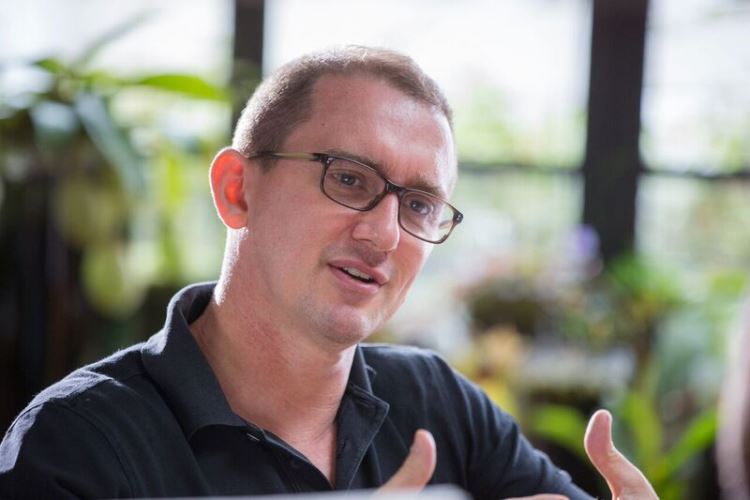 Sustainable mega cities
Sustainable mega cities
We work across South-East Asia, India and China and see firsthand the immense pressures of population and climate in growing megacities. There is simply no space for the kind of western lifestyle that the people aspire to - the suburban dream and the models of hyperdensity from the West are quite inappropriate. Despite this, consultants from developed countries are exporting high energy, sealed towers to these cities, committing them to decades of future energy consumption and buildings that are uninhabitable if the power fails. As an alternative, we have been developing hyperdense models that are very simple technologically and offer outdoor community amenities missing in the congested ground level of these cities: parks, childcare, safe spaces for play and relaxation.
The buildings are resilient. They need power for lifts and water pumping, but almost everything else works simply through natural light and ventilation, so they can function well during power outages and are cheap to live in. We recently completed a public housing project in Singapore - Skyville @ Dawson - which exemplifies this approach. It’s had an enthusiastic response from the inhabitants and a lot of interest from around the globe, as affordable high quality housing is becoming a rarity in many places.
Efficiency and highly liveable cities
Our big idea is the self-sufficient city. It is not enough to try and do less harm. The end-game has to be a city that shrinks the ecological footprint of the city itself. We have introduced some ratings which we think will help achieve really liveable and sustainable cities. We hope they will be adopted widely. We hear a lot from developers about net-to-gross efficiency, or façade-to-volume efficiency. For end users good ratios for developers can translate to low liveability. High efficiency can actually mean squeezed common areas and little access to light and air.
Our ratings seek to balance the Green Plot Ratio (ratio of garden to the site), Community Plot Ratio (the ratio of community space to the site), Civic Generosity Index (how a development contributes to the city) and the Ecosystem Contribution Index which rates how a development provides living space for natural systems, creatures and humans. Finally, the Self-Sufficiency index measures how the project rates in terms of producing its own water, food and energy.
Of course, these are not the definitive way of measuring liveability but we think they are important and currently missing from how many people evaluate buildings. Buildings, if you personify them, can be selfish and vain, taking things from the city and the environment and not giving anything back. We think if developments are rated in a more holistic way, there will be pressure to improve the liveability of cities. It would be nice if they were labelled like appliances, so people can question projects that score a zero on civic generosity in our area and bring down the overall quality of life.
A positive and compelling prototype
We already see it making a big difference. Getting innovative projects built is really hard, but the moment you show that it is possible within commercial budgets and all the real-world constraints, it becomes much easier for other developers to do it or harder for others to justify their resistance. What has been really good for us, in promoting our scoring system, is the huge and enthusiastic response to buildings such as Parkroyal on Pickering from non-architects. People are generally receptive and would like a city with these kinds of buildings; or don’t mind living in a high-rise, as long as it’s liveable and sustainable. Having a positive and compelling prototype has a massive influence way beyond just the actual users of the building.
UWA and me
Being a graduate and now an adjunct professor, UWA holds a special place in my heart. The campus is such a delightful experience and a masterclass in pleasing human spaces and, in many ways, the lessons and "memes" of the campus get ingrained in architects who graduate from UWA. There is a very strong culture and continuity at the School of Architecture, with some staff such as Simon Anderson and Geoffrey London still there from my time as a student 30 years ago. It makes coming back to visit the department a real joy!
About Richard
Richard Hassell is the co-Founding Director of WOHA. He graduated from the University of Western Australia in 1989, and was awarded a Master of Architecture degree from RMIT University, Melbourne, in 2002. He has lectured at many universities, and served as an adjunct professor at the University of Technology Sydney and the University of Western Australia. He has mentored students under NUS's Embedded Studio in Practice program and anchored the University's MSc in Integrated Sustainable Design Masterclass since 2011. Together with Wong Mun Summ, WOHA conducted a design studio at the Singapore University of Technology and Design in 2016.
WOHA are currently exhibiting an invited, solo exhibition at The Skyscraper Museum in New York until September 2016. They are also participating at the 2016 Venice Architectural Biennale. In conjunction with their installation in Venice, WOHA has launched a new book, titled Garden City Mega City, which shares strategies for the burgeoning mega cities of the tropical belt.